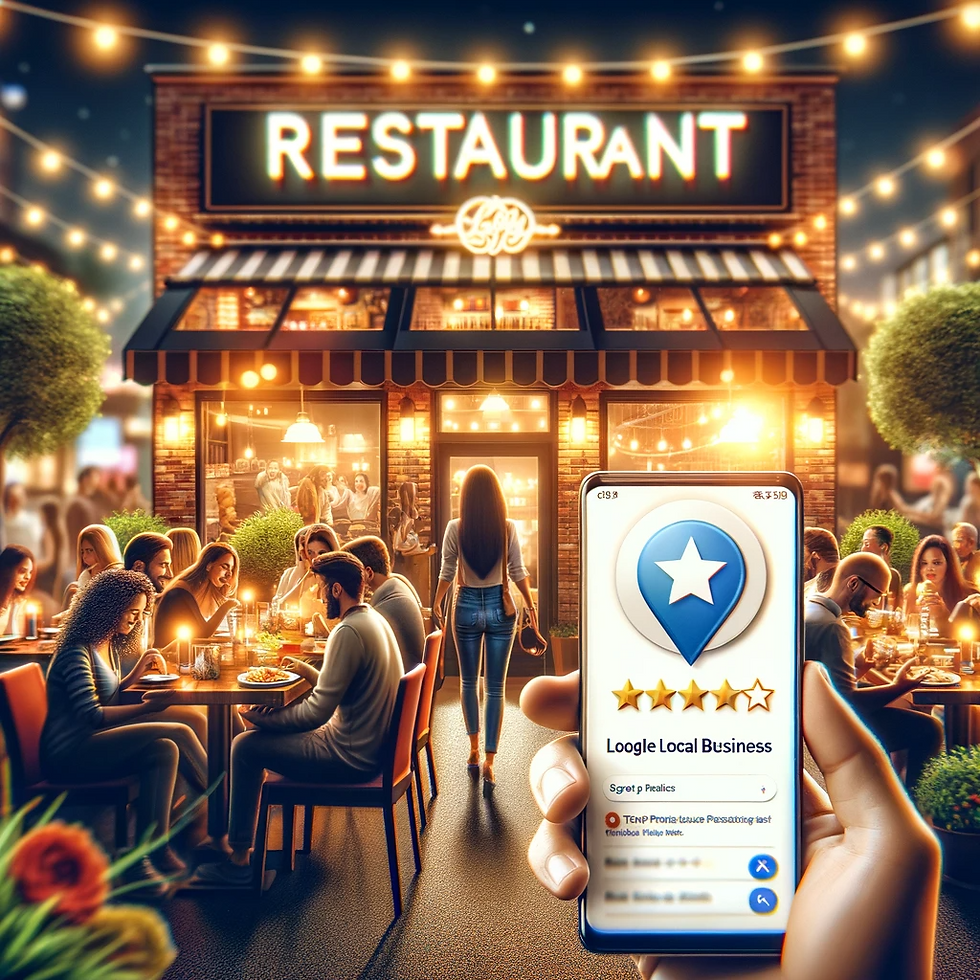The Marketer's Recipe for Restaurant Branding Success
- Uttiya Roy
- Dec 15, 2023
- 3 min read
In the bustling realm of restaurant branding, we unite the strategic flair of expert marketing with the precision of technical development. This fusion creates a powerful brand identity that resonates with customers and thrives in the digital era. Join us as we explore how innovative marketing strategies and cutting-edge technology can redefine the dining experience.
Market Research and Brand Positioning

Understanding Your Market
Before crafting your brand, it's crucial to understand who your customers are and what they seek. Conduct market research to uncover demographics, preferences, and dining trends. This data shapes a brand that resonates with your target audience, ensuring relevance and appeal.
Competitor Analysis
Analyze your competitors to identify market gaps and unique selling points. Observe their branding strategies, menu offerings, and customer feedback. Use these insights to differentiate your restaurant, offering something uniquely appealing to your audience.
Defining Your Unique Brand Position
With market knowledge, carve out your unique brand position. This involves aligning your restaurant's values, ambiance, and offerings with customer expectations. It's about creating a distinctive identity in a crowded market.
Crafting a Consistent Message
Your brand message should reflect your unique position and resonate with your target audience. It must be consistent across all platforms, from your website to your menu design. A clear, cohesive message strengthens brand recognition and loyalty.
Utilizing Data Analytics for Restaurant Branding

Gathering Customer Data
In the age of information, data is king. Collect data from online orders, reservation systems, and social media interactions. This information provides invaluable insights into customer behavior, preferences, and patterns.
Analyzing Customer Trends
Use data analytics tools to decipher trends and patterns in customer behavior. Understanding what dishes are popular, peak dining times, and customer demographics helps tailor your branding and operational strategies to meet customer needs.
Personalizing Customer Experience
Leverage data to personalize the dining experience. Tailored recommendations, special occasion reminders, and customized marketing messages make customers feel valued and increase brand loyalty.
Making Informed Decisions
From menu changes to marketing campaigns, data-driven insights should guide your business decisions. This approach minimizes guesswork, allowing for more strategic, effective, and customer-centric decision-making.
Automating Brand Engagement

Implementing Chatbots for Customer Interaction
Introduce chatbots on your website and social media platforms. These automated assistants can handle reservations, answer FAQs, and provide personalized recommendations, enhancing customer engagement and efficiency.
Automating Social Media Campaigns
Leverage automation tools for social media management. Schedule regular posts, track engagement metrics, and respond promptly to customer interactions. Consistent and timely social media presence keeps your brand active and engaging.
Email Marketing Automation
Use email automation to send newsletters, promotional offers, and personalized greetings. Segmented mailing lists ensure that customers receive relevant content, strengthening brand loyalty and customer relationships.
Analyzing Engagement for Continuous Improvement
Regularly analyze engagement metrics from these automated systems. Use these insights to refine your strategies, ensuring your brand remains dynamic, responsive, and aligned with customer expectations.
Strategic Marketing and Promotion

Strategic marketing and promotion are crucial to restaurant branding. Effective branding isn't just about being seen; it's about being remembered and chosen. Here's how to approach it:
Develop a Strong Online Presence:
Create a user-friendly website showcasing your brand, menu, and unique story.
Optimize search engines to increase visibility.
Engage in Social Media Marketing:
Utilize platforms like Instagram and Facebook for visual storytelling.
Run targeted ads to reach potential customers in your area.
Leverage Influencer Partnerships:
Partner with local food bloggers and influencers to expand your reach.
Authentic content from influencers can boost credibility and attract new customers.
Organize and Promote Events:
Host themed events or culinary workshops to create buzz.
Use these events to showcase your brand's personality and strengths.
Offer Promotions and Loyalty Programs:
Introduce special offers, discounts, or loyalty programs to encourage repeat business.
Personalize offers based on customer preferences and previous orders.
Invest in Local SEO and Listings:
Ensure your restaurant is listed in local directories and Google My Business.
Encourage reviews and ratings from customers to improve online credibility.
Utilize Email Marketing:
Send regular newsletters with updates, offers, and behind-the-scenes glimpses.
Segment your email list for more targeted and effective communication.
These strategies should align with your brand's identity and values, ensuring that every marketing effort reaches your audience and resonates with them.
Effective restaurant branding is a dynamic blend of insightful marketing and smart technology. It's about understanding your audience, leveraging data, engaging customers innovatively, and marketing strategically. This process demands adaptability and creativity to keep pace with evolving trends and customer preferences. Ultimately, a successful restaurant brand transcends mere dining; it creates memorable experiences and emotional connections, ensuring lasting customer loyalty and a distinct place in the competitive culinary landscape.



Comments